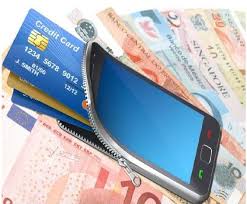Technology is repainting the payments landscape. Given the complexity of the payments ecosystem in various countries, change happens slowly. Sometimes it takes decades, but change does happen. Newer digital technologies may accelerate this evolution. This post looks at the future of money and how it will evolve to become cash-less, card-less and paper-less.
The Future of Money, which looks at the overall industry and factors leading to greater digitization of payments. Mobile phones have been a catalyst for much of the change, but it is important to remember that it is still very much a cash-based world.
While countries differ in terms of moving toward cards, mobile phones or other new digital technologies for payments, one thing is clear: ALL countries are trying to move away from using relatively expensive and inefficient paper money and metal coins for making payments.
Some countries have begun to move away from cash to primarily plastic cards for payments, while others are leap-frogging cards to use their mobile phones. Still other countries are exploring new all-digital bank accounts accessed by the consumer’s mobile phone number and PIN.
The replacement of magnetic stripe cards with chip cards reduces the risk of criminal sabotage and prevents skimming techniques that criminals use to read and store data of cards inserted into ATMs.
The one common denominator is the evolution away from cash, which has many obvious and hidden costs. With greater recognition of increasing income inequality around the world, new mobile money/digital payment solutions can also help to alleviate this problem.
The future of money will leverage digital and mobile technologies to enable the creation of new lower-cost, highly efficient payment solutions. This future will be cashless, card less and paperless. It may take a LONG time to become reality, and it will surely be unevenly distributed.
There’s an evolution certainly toward more and more card-free forms of payment. Even if you look at the growth rate of e-commerce, it’s all card-based but not with actual cards, and that’s growing much faster than the rate of retail where people maybe actually swiping or dipping a card. Ultimately we are going to be in a position where we won’t need a physical element to carry around with you to provide the information you need to pay. That information is stored on a mobile phone or a wearable device, or some combination of all of those things. It’s going to take time just because people are very used to cards. But that’s going to change pretty dramatically.




